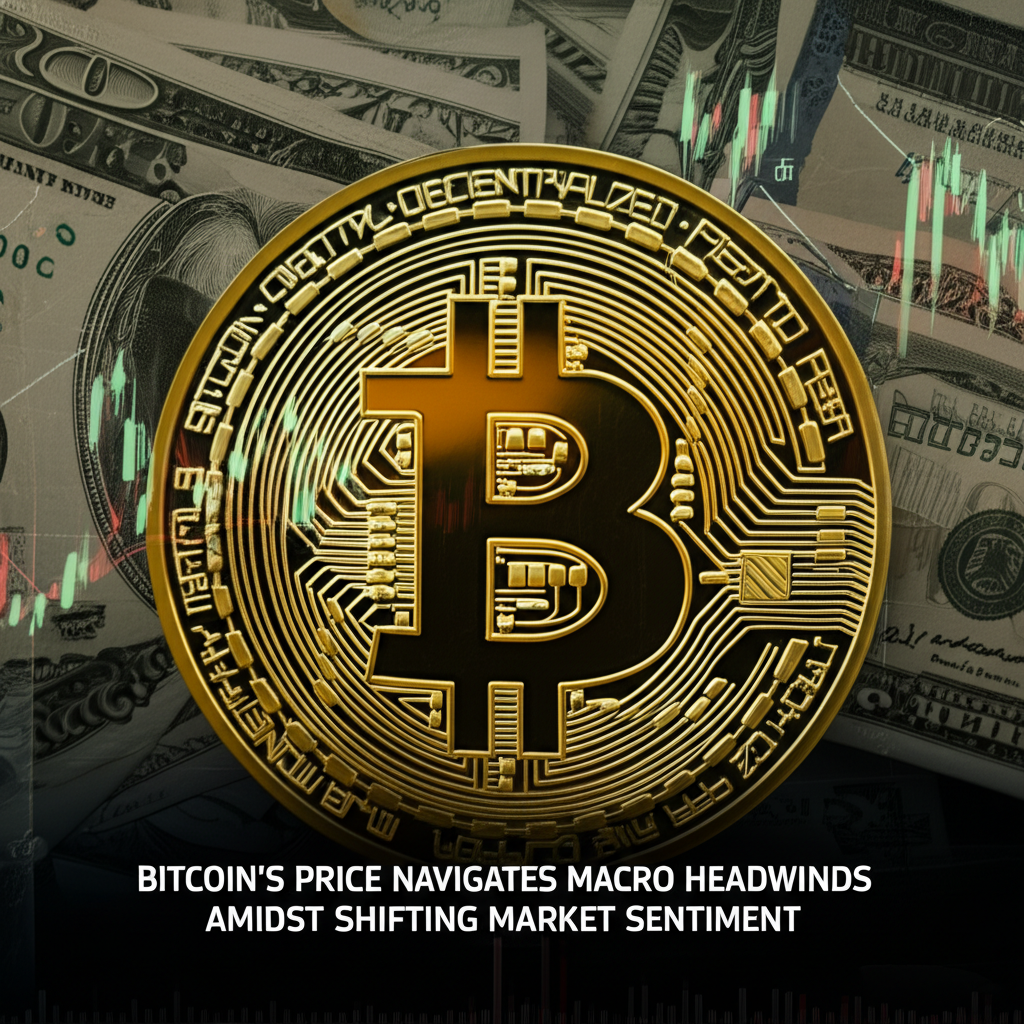US Economic Data and Fed Speculation Fuel Volatility in Crypto Markets
The cryptocurrency market, particularly Bitcoin, continues to be heavily influenced by macroeconomic factors emanating from the United States. Recent days have seen significant price movements as investors keenly analyze inflation reports, employment figures, and the evolving rhetoric from Federal Reserve officials, shaping expectations around future interest rate decisions and overall market liquidity.
The Influence of US Economic Indicators
Recent economic data releases from the United States have consistently sent ripples through the cryptocurrency landscape. Figures such as the Consumer Price Index (CPI) and Producer Price Index (PPI), which serve as key inflation gauges, are meticulously dissected by market participants. Stronger-than-expected inflation data tends to signal a more hawkish stance from the Federal Reserve, potentially leading to higher interest rates and a reduced appetite for risk assets like cryptocurrencies. Conversely, softer inflation readings can ignite hopes for rate cuts, often resulting in a positive market reaction as investors anticipate looser monetary conditions. Furthermore, robust employment reports can also suggest a resilient economy, giving the Fed more leeway to maintain higher rates for longer, thereby impacting crypto valuations.
Federal Reserve’s Shadow Over Bitcoin
The Federal Reserve’s monetary policy trajectory remains a dominant force dictating the short-to-medium term direction of Bitcoin and the broader crypto market. Speculation surrounding interest rate cuts or hikes, quantitative tightening, and the overall liquidity in the financial system directly affects the flow of capital into and out of digital assets. Recent statements from Fed officials, along with the minutes from their policy meetings, are scrutinized for any clues regarding future policy shifts. Any indication of a delayed or fewer rate cuts than previously anticipated can put downward pressure on Bitcoin, as higher rates increase the appeal of less volatile, interest-bearing assets, making riskier investments less attractive by comparison.
Bitcoin’s Resilience and Key Support Levels
Despite the macroeconomic pressures, Bitcoin has demonstrated a degree of resilience, managing to hold critical support levels amidst volatility. Traders and analysts are closely watching key technical indicators and price ranges that could determine its next major move. While some corrections have occurred following unfavorable economic news, Bitcoin has often found buying interest around significant psychological and technical support zones. This reflects a continued underlying belief in its long-term value proposition among a segment of investors, even as short-term trading is heavily influenced by external economic forces. The asset’s ability to rebound from dips suggests persistent demand from various market participants.
Altcoin Performance in Bitcoin’s Wake
The performance of altcoins typically mirrors Bitcoin’s movements, albeit often with amplified volatility. When Bitcoin experiences significant price fluctuations due to macro news, altcoins usually follow suit, either appreciating sharply during uptrends or experiencing steeper declines during downturns. The correlation remains high, and Bitcoin’s stability or volatility often sets the tone for the entire digital asset ecosystem. However, certain altcoins with strong fundamental developments or unique narratives can occasionally decouple from Bitcoin’s immediate price action, attracting specific investor interest. Nevertheless, the general health of the altcoin market is intrinsically linked to Bitcoin’s ability to maintain upward momentum or consolidate within a healthy range.
Institutional Interest and ETF Flows
Despite the market’s sensitivity to macro news, institutional interest in cryptocurrencies, particularly Bitcoin, continues to be a significant underlying trend. The ongoing performance of Bitcoin Spot Exchange-Traded Funds (ETFs) in the US serves as a crucial indicator of sustained institutional demand. While daily flows into these ETFs can fluctuate based on market sentiment and profit-taking, the cumulative inflows signify a growing acceptance of Bitcoin as a legitimate asset class within traditional finance. This steady institutional accumulation provides a foundational demand layer that could potentially mitigate some of the downside risks imposed by adverse macroeconomic conditions, suggesting a maturation of the crypto market.
Conclusion
The cryptocurrency market remains deeply intertwined with global macroeconomic developments, with recent US economic data and Federal Reserve policy expectations playing a pivotal role in shaping price action. While Bitcoin and altcoins have shown sensitivity to these external factors, the underlying institutional adoption and the asset class’s inherent resilience continue to provide a foundation for future growth. Investors are advised to monitor both technical indicators and critical economic announcements for informed decision-making in this evolving landscape.

